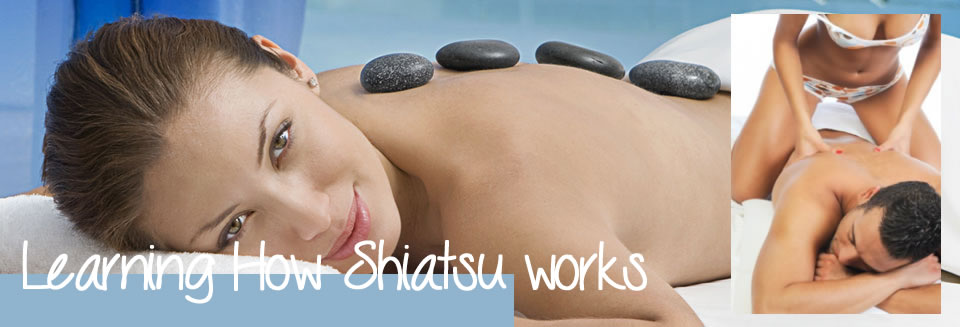Learn Shiatsu
Learning How Shiatsu can work for you
Bring in the new year - Learn Shiatsu's Introduction to shiatsu contains very important pointers that will help you learn the art of Shiatsu effectively; it also presents some important 'do's and don'ts' to consider when giving a Shiatsu treatment.
See commonly asked questions about Yoga
Therefore it is strongly recommended that you read it carefully before proceeding to Part One.
- Yin and Yang
- THE ABDOMEN TREATMENT
- Leg Pressure Points
- Preparing for a Shiatsu Session
- The Five Elements
- Shoulder pressure points
- THE STEP-BY-STEP SEQUENCE
- RESOURCES
- The origins of Shiatsu
- Techniques
- How to find the points
- POINTS TO REMEMBER
- How much pressure to use
- SELF-SHIATSU
- Choosing a school or practitioner
- SELF-TREATMENT
- Shoulders Treatment
- Vital organs
- Energy channels
- TREATING THE INDIVIDUAL
- DEVELOPING YOUR TECHNIQUE
- Energy in the hands
- Hara and breathing
- SELF-DEVELOPMENT EXERCISES
- Back of body treatment
- Front of leg pressure points
- Toe Treatment
- Tsubos
- Kyo and Jitsu
- Increasing your sensitivity
- Governing Vessel
- Forehead Massage

Other sites to look at
| capital-spas.co.uk |
| katyperrybeauty.co.uk |
The vital organs
Classical Chinese medicine takes a somewhat different view of the body organs and their functions, from modern Western medicine. The traditional oriental view of the body is focused not only on each physical organ and its mechanical function, but on the different energy qualities of each system, and how these energies all complement each other and interact as a whole. Each of these organ systems includes a meridian, or channel along which its Ki flows in a particular direction; and from the point of view of both diagnosis and healing these are more important than the organ themselves.
Relationships between the organs are also viewed differently in the classical Chinese system of medicine. The primary breakdown is not into functional groups such as stomach/ small intestine/large intestine, but into pairs of organs which are complementary and have a balance of energetic functioning between them; the pairs themselves are in turn ordered into a sequence through which there is an overall Ki flow. This is explained below.
The vital organs
Classical Chinese medicine takes a somewhat different view of the body organs and their functions, from modern Western medicine. The traditional oriental view of the body is focused not only on each physical organ and its mechanical function, but on the different energy qualities of each system, and how these energies all complement each other and interact as a whole. Each of these organ systems includes a meridian, or channel along which its Ki flows in a particular direction; and from the point of view of both diagnosis and healing these are more important than the organ themselves.
Relationships between the organs are also viewed differently in the classical Chinese system of medicine. The primary breakdown is not into functional groups such as stomach/ small intestine/large intestine, but into pairs of organs which are complementary and have a balance of energetic functioning between them; the pairs themselves are in turn ordered into a sequence through which there is an overall Ki flow. This is explained below.
Prices and Tuition
£50 for "First Session" Pilates or Pilates/Yoga or Yoga session, 1 1/2 -2 hours (where a consultation is involved). The first Pilates only or mixed Pilates/Yoga session is £50 for 1 1/2 - 2 hours. £30 for 1 hour £45 for 1 1/2 hours (Minimum rate is £45 for 1 1/2 - 2 hours unless it's a regular £30 1 hour session. ) £60 for 2 hours Other options are available, contact us if for other options. One-to-one rate/small group rates (2-4 clients, rate is the total payment, irrespective of number of participants.) Price reductions are negotiable for regular sessions.
